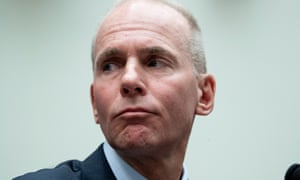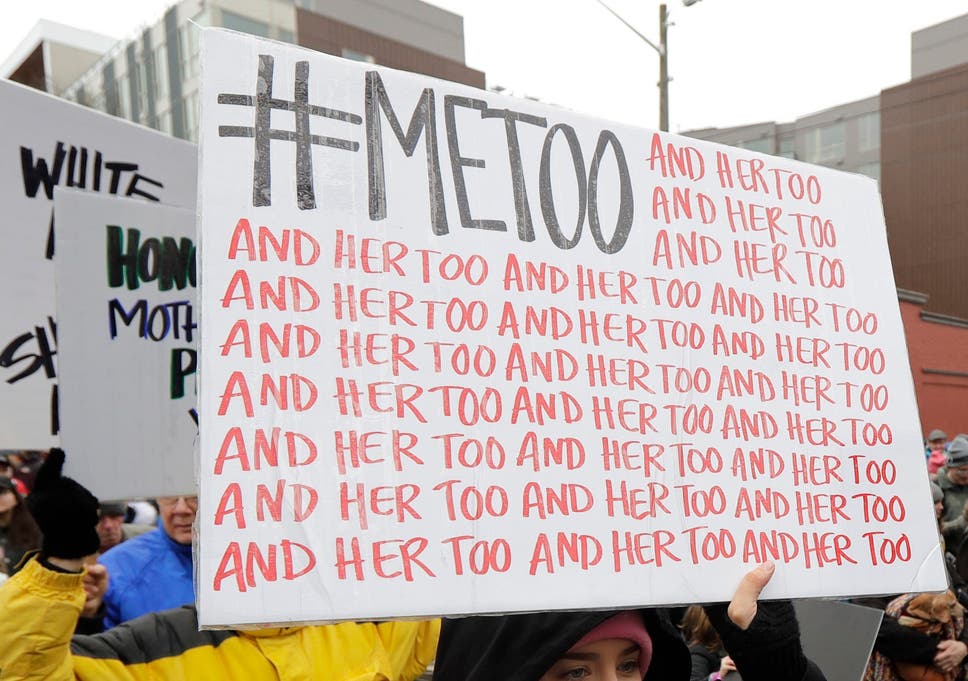A billboard for British Steel photographed in Scunthorpe,
England on 25 September 2019.
(Joseph M. Giordano)
Michael Murphy, 61, was born and raised in Scunthorpe, a small industrial city in the north of England that sprang up in the late 19th century following the discovery of large deposits of iron ore.
The steel industry is a vital part of the global economy that each year transforms iron ore into products worth around US$2.5 trillion. The material is used to make everything from home appliances to cars to skyscrappers.
For over 100 years, labourers flocked from around the British Isles to work in Scunthorpe’s steelworks. Michael’s late father, a manual labourer from Ireland, arrived in the city as a young man to work for the British Steel Company. The job allowed him to support his children and purchase a semi-detached house for his growing family.
When Michael was a young man, he too worked for British Steel during the summers, shoveling piles of fine steel dust. And Michael’s sister started her career as a secretary working for the company. Michael remembers his childhood in Scunthorpe fondly, and he says that British Steel played a central role in his upbringing.
“We were a working-class family,” he tells Equal Times. “I had a perfect childhood because I had loving parents. Once a year we would go on a trip to the coast organised by British Steel.”
“Almost every family in this town has some connection to British Steel,” Michael, a longtime Labour Party activist, continues. “If the company folds this town will become a ghost town, or heroin central.”
For months, this was the cloud of fear that hung over Scunthorpe after British Steel, the country’s second largest steel producer, went into liquidation in May. Between the main production site in Scunthorpe and rolling facilities in Teeside in the north-east of England, an estimated 4,000 jobs were at risk, not to mention 20,000 jobs in the supply chain. Last month, affected workers were able to breathe a sigh of relief after the Chinese firm Jingye announced plans to purchase the plant for £70 million (approximately US$90 million) and invest over £1.2 billion (approximately US$1.5 billion) in British Steel over the next decade.
Scunthorpe’s predicament is familiar to people living in what was once the centre of the steel industry in the United States. Places like Pittsburgh, Pennsylvania were, like Scunthorpe, built on the steel industry and ultimately transformed when forced to face the industry’s decline. The Bethlehem Steel steelworks in Sparrows Point outside of Baltimore, Maryland provided high wages and union-protected jobs that supported tens of thousands of families in the mid-20th century. The company shuttered for good in 2012. Places like Youngstown, Ohio and Gary, Indiana had their economies decimated in the late 1980s after steel plants closed. And these are just a few examples.
Andrew Morton, a 67-year-old former steel worker from Baltimore, was one of the last people working for Bethlehem Steel before it closed its doors in 2012, slashing the roughly 2,000 jobs that remained. He had been working for the company since he was 18 years old.
“A lot of people lost their jobs. It caused a lot of hardship,” Morton says. “Bethlehem Steel played a major part in the economy and allowed middle income families to do things like pay for college. When they lost those incomes some people adapted, but some people committed suicide. Most people didn’t do very well.”
Trump’s trade war and the UK’s Brexit-related chaos
The steel industry has been in decline in both the United Kingdom and the United States since the 1980s, thanks to shifting global markets, new technologies and governments that have been reluctant to prop up a struggling industry. China now dominates global steel production, an industry that the US and UK commanded together in the 19th century. But right-leaning populists on both sides of the Atlantic recently promised that the steel industry could be revived with the right policies.
Populists have attempted to win political points by exploiting the discontent of workers who see their wages stagnate as living costs rise. They have promised to revive struggling industries for steel and coal workers, even though economists say that their goals are unrealistic in the current global economy.
US president Donald Trump levied tariffs of up to 25 per cent on steel imports in an effort to boost the US steel industry. Meanwhile, the UK’s Brexit Party leader Nigel Farage claimed that British Steel could have avoided going into liquidation if the United Kingdom had left the European Union sooner, citing the European Union’s Emissions Trading Scheme – which incentivises heavy industry to cut carbon emissions – as a factor contributing to the industry’s decline.
Instead, Trump’s trade policies and the UK’s Brexit-induced political turmoil have thrown their respective steel industries into chaos. The US Steel Company lost around 70 per cent of its market value, or around US$5.5 billion, and shuttered several mills after the Trump administration levied its tariffs on steel imports.
The US Steel Company did not respond to requests for comment.
Much of the turmoil is thanks to competition from Beijing. Last year, China produced around 51 per cent of global steel output, or 928.3 million metric tons. By comparison, the US comes in fourth globally, producing 86.7 million metric tons of steel in 2018. The United Kingdom, meanwhile, only produces between five and six million metric tons annually, according to recent data. It is the fifth largest steel producer in the European Union, but it does not make the top ten list of global steel producers.
In early October, the US credit ratings agency Moody’s downgraded its outlook for the entire US steel industry from ‘stable’ to ‘negative’ and released a statement affirming that the situation is not expected to improve. Prices that hovered above US$800 a ton dropped to US$520 a ton in the last half of 2018.
Meanwhile, economists note that the uncertainty caused by Brexit has sped up the decline of the UK’s steel industry. Many buyers of British steel have opted to cancel their contracts until it becomes clear which tariffs they will pay in the wake of the UK’s eventual exit from the European Union.
Steel unions have warned that a no-deal Brexit, in which the country would leave the European Union without a deal, would leave their industry vulnerable. EU regulations against steel dumping from China have long protected British steelworkers.
“British Steel would not have gone into liquidation but for the threat of a no-deal exit from the EU. That’s an incontrovertible fact,” says Nic Dakin, who is standing to be re-elected as a Labour Member of Parliament for Scunthorpe during the upcoming UK general election on 12 December.
(Joseph M. Giordano)
Michael Murphy, 61, was born and raised in Scunthorpe, a small industrial city in the north of England that sprang up in the late 19th century following the discovery of large deposits of iron ore.
The steel industry is a vital part of the global economy that each year transforms iron ore into products worth around US$2.5 trillion. The material is used to make everything from home appliances to cars to skyscrappers.
For over 100 years, labourers flocked from around the British Isles to work in Scunthorpe’s steelworks. Michael’s late father, a manual labourer from Ireland, arrived in the city as a young man to work for the British Steel Company. The job allowed him to support his children and purchase a semi-detached house for his growing family.
When Michael was a young man, he too worked for British Steel during the summers, shoveling piles of fine steel dust. And Michael’s sister started her career as a secretary working for the company. Michael remembers his childhood in Scunthorpe fondly, and he says that British Steel played a central role in his upbringing.
“We were a working-class family,” he tells Equal Times. “I had a perfect childhood because I had loving parents. Once a year we would go on a trip to the coast organised by British Steel.”
“Almost every family in this town has some connection to British Steel,” Michael, a longtime Labour Party activist, continues. “If the company folds this town will become a ghost town, or heroin central.”
For months, this was the cloud of fear that hung over Scunthorpe after British Steel, the country’s second largest steel producer, went into liquidation in May. Between the main production site in Scunthorpe and rolling facilities in Teeside in the north-east of England, an estimated 4,000 jobs were at risk, not to mention 20,000 jobs in the supply chain. Last month, affected workers were able to breathe a sigh of relief after the Chinese firm Jingye announced plans to purchase the plant for £70 million (approximately US$90 million) and invest over £1.2 billion (approximately US$1.5 billion) in British Steel over the next decade.
Scunthorpe’s predicament is familiar to people living in what was once the centre of the steel industry in the United States. Places like Pittsburgh, Pennsylvania were, like Scunthorpe, built on the steel industry and ultimately transformed when forced to face the industry’s decline. The Bethlehem Steel steelworks in Sparrows Point outside of Baltimore, Maryland provided high wages and union-protected jobs that supported tens of thousands of families in the mid-20th century. The company shuttered for good in 2012. Places like Youngstown, Ohio and Gary, Indiana had their economies decimated in the late 1980s after steel plants closed. And these are just a few examples.
Andrew Morton, a 67-year-old former steel worker from Baltimore, was one of the last people working for Bethlehem Steel before it closed its doors in 2012, slashing the roughly 2,000 jobs that remained. He had been working for the company since he was 18 years old.
“A lot of people lost their jobs. It caused a lot of hardship,” Morton says. “Bethlehem Steel played a major part in the economy and allowed middle income families to do things like pay for college. When they lost those incomes some people adapted, but some people committed suicide. Most people didn’t do very well.”
Trump’s trade war and the UK’s Brexit-related chaos
The steel industry has been in decline in both the United Kingdom and the United States since the 1980s, thanks to shifting global markets, new technologies and governments that have been reluctant to prop up a struggling industry. China now dominates global steel production, an industry that the US and UK commanded together in the 19th century. But right-leaning populists on both sides of the Atlantic recently promised that the steel industry could be revived with the right policies.
Populists have attempted to win political points by exploiting the discontent of workers who see their wages stagnate as living costs rise. They have promised to revive struggling industries for steel and coal workers, even though economists say that their goals are unrealistic in the current global economy.
US president Donald Trump levied tariffs of up to 25 per cent on steel imports in an effort to boost the US steel industry. Meanwhile, the UK’s Brexit Party leader Nigel Farage claimed that British Steel could have avoided going into liquidation if the United Kingdom had left the European Union sooner, citing the European Union’s Emissions Trading Scheme – which incentivises heavy industry to cut carbon emissions – as a factor contributing to the industry’s decline.
Instead, Trump’s trade policies and the UK’s Brexit-induced political turmoil have thrown their respective steel industries into chaos. The US Steel Company lost around 70 per cent of its market value, or around US$5.5 billion, and shuttered several mills after the Trump administration levied its tariffs on steel imports.
The US Steel Company did not respond to requests for comment.
Much of the turmoil is thanks to competition from Beijing. Last year, China produced around 51 per cent of global steel output, or 928.3 million metric tons. By comparison, the US comes in fourth globally, producing 86.7 million metric tons of steel in 2018. The United Kingdom, meanwhile, only produces between five and six million metric tons annually, according to recent data. It is the fifth largest steel producer in the European Union, but it does not make the top ten list of global steel producers.
In early October, the US credit ratings agency Moody’s downgraded its outlook for the entire US steel industry from ‘stable’ to ‘negative’ and released a statement affirming that the situation is not expected to improve. Prices that hovered above US$800 a ton dropped to US$520 a ton in the last half of 2018.
Meanwhile, economists note that the uncertainty caused by Brexit has sped up the decline of the UK’s steel industry. Many buyers of British steel have opted to cancel their contracts until it becomes clear which tariffs they will pay in the wake of the UK’s eventual exit from the European Union.
Steel unions have warned that a no-deal Brexit, in which the country would leave the European Union without a deal, would leave their industry vulnerable. EU regulations against steel dumping from China have long protected British steelworkers.
“British Steel would not have gone into liquidation but for the threat of a no-deal exit from the EU. That’s an incontrovertible fact,” says Nic Dakin, who is standing to be re-elected as a Labour Member of Parliament for Scunthorpe during the upcoming UK general election on 12 December.
Hit hard by voting to leave
Still, 68.68 per cent of the people in Scunthorpe who voted in the Brexit referendum voted to leave the European Union.
Denise Thompson, who runs a hotel near the British Steel plant, says she voted in favour of Brexit because she didn’t want money that could be spent on the UK’s National Health Service to line the pockets of diplomats in Brussels. She still wants the United Kingdom to leave the European Union, but she admits that business has been bad since the Brexit referendum. The number of contractors that British Steel employs has dropped precipitously, leading to fewer guests at the hotel, she says.
“People come for one night instead of for three or four weeks,” she tells Equal Times. “We used to have a couple of thousand guest workers stay every season. Now it’s virtually none, perhaps between 40 and 50.”
Thompson says that a lot of her friends and acquaintances in Scunthorpe are reluctant to spend money because they don’t know if they’ll still have a job tomorrow. And many worry that their working conditions will become more precarious.
Gwylim Glyndwr Williams, 60, began working for British Steel at the age of 19 and rose to become a team leader and a union member on the National Trade Union Steel Coordinating Committee. He recently retired after 40 years with the company, but he voted for the UK to remain in the EU because he trusts the employment laws made in Brussels more than those established by the ruling Conservative Party, which he says has abandoned British Steel’s workers.
“Over the years, the Conservatives have been in power more times than Labour. It’s just the way it is,” Williams says. “But the European Union had some great employment laws over the years. The laws that came in were far superior to our old health and safety laws. In this country the government has always watered down the legislation, but under the European banner we’ve been protected.”
Share this page







